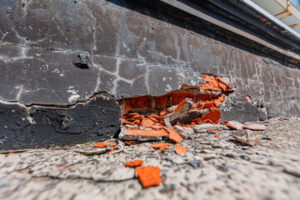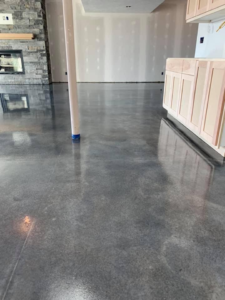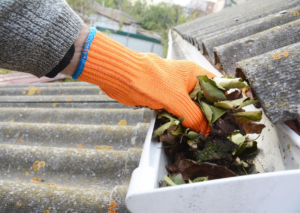A foundation that sinks or moves can damage the home. A professional can assess the damage and recommend repairs to restore the original elevation.

The most effective repair methods for concrete foundations are steel piers and slabjacking. These are considered permanent solutions for unstable soils. They can also lift the foundation if the concrete is sinking. Visit https://www.apexplanofoundationrepair.com/ to learn more.
When water is allowed to penetrate a home’s foundation, it causes serious problems. Aside from allowing moisture to enter the home, which leads to fungi growth and musty odors, it also applies pressure against the walls of the foundation which can lead to cracking. This is why it is so important to protect against water damage to the foundation of a home. It can be difficult to know when this is occurring, but there are several signs to look for that indicate a need for foundation repair.
Wall Cracks
The most common sign of a need for foundation repair is the appearance of hairline cracks in the walls of a home. These can appear vertical or diagonal and are typically caused by expansion and contraction of the concrete. While these can be minor and not cause for concern, if they continue to grow, they may indicate a more serious issue with the foundation of a home.
Other signs of a need for foundation repair include doors and windows that don’t open or close properly, which indicates movement in the foundation of the home. Additionally, sagging floors and uneven surfaces are indicative of problems with the foundation.
If you notice these issues in your home, it is important to have them assessed by a professional right away to prevent further damage. A professional will be able to assess the severity of the problem and devise a plan to correct it.
One way to help prevent future foundation damage is to ensure that the soil around a house is well-draining. This can be done by ensuring that gutters are not blocked and downspouts are properly directing water away from the foundation of the home. In addition, ensuring that the soil slopes away from the foundation of the home is another way to ensure proper drainage.
Another way to prevent future foundation issues is to install a sump pump in the basement of a home. This can be installed by a professional and will help to remove any standing water in the basement or crawl space of a home. This will help to prevent the formation of mold and other harmful fungi in these areas.
Structural Issues
When a foundation shifts and sinks, it can have major implications for the rest of the house. The settling of the foundation can create cracks in walls and floor surfaces, leading to water leaks or even structural instability. Indirectly, it can lead to doors and windows that no longer fit properly or that leave gaps when closed. Uneven floors and bouncing ceilings can also indicate foundation problems as the weight of the house begins to shift from one area to another.
Small cracks in the exterior of a home are normal, but homeowners should be suspicious if they notice horizontal cracking that goes from one wall to the other. These are often signs that the foundation is shifting and are best fixed by a professional before they worsen. Interior cracks, particularly those that appear to have a zig-zag pattern, are also usually cause for concern.
Bowed or bulging masonry or block walls, a concrete wall that is out of plumb and separated from chimneys are also signs of a serious problem with the foundation. If left unrepaired, these problems will cause basement floors to become out of level and water seepage is likely.
If the problem is caught early, a foundation repair expert can use carbon fiber strips or steel rods to stabilize a damaged foundation wall. In severe cases, a portion of the foundation may need to be rebuilt.
Homeowners can avoid foundation issues by grading the soil around their homes to ensure that water is diverted away from the foundation. They should also water the soil regularly during dry periods to prevent the soil from shrinking and putting stress on the foundation.
When foundation problems are caught early, they can be repaired with minimal damage to the home and may not interfere with mortgage financing. However, some issues may be too large for a homeowner to continue living in the home and if this is the case, they can take advantage of VA home loan programs as well as Fannie Mae and Freddie Mac’s HomeStyle and CHOICERenovation loans. These loans can be used to help pay for the repairs necessary to keep a homeowner in their home.
Mold Issues
Mold is a common problem that can cause serious problems for foundations. It thrives in a damp environment, which is what often happens when a foundation is damaged. The mold can then damage the surface and materials of the foundation, making it a more hospitable place for other types of infestations to take hold. In addition, mold growth can cause issues with interior air quality and even lead to health problems for those living in the home. If you are worried about mold, you should speak with a professional company that specializes in mold removal and foundation repair.
Inspecting the foundation on a regular basis can help to spot early signs of a problem. This can include noticing cracks that may be indicative of a foundation issue, sagging floors and ceilings, and doors or windows that stick or don’t close properly. It is also important to check the drainage around your house on a regular basis to ensure that water and moisture aren’t seeping into or around the foundation.
It is also important to keep in mind that while foundation issues can sound like a death sentence for your dream home, they don’t necessarily have to be. You may be able to work out a deal with the seller or use your VA loan or Fannie Mae or Freddie Mac CHOICERenovation mortgages to address the issue.
The most common symptoms of a foundation issue are a leaning porch, chimney or fireplace and crumbling, bowing or sagging walls. These are all indicators that the structure is in danger of buckling and falling over, and they may be caused by shifts or movement within the soil beneath the foundation. In addition, you may notice signs of a damp basement or crawl space, such as water stains, musty or earthy odors, and pests such as cockroaches or centipedes. The problem can get worse, however, if mold or mildew grows in the area. The moisture can lead to further structural damage and create a more favorable environment for mold growth, so both foundation repair and mold removal should be addressed simultaneously.
Electrical Issues
Some homeowners are concerned that a foundation repair may affect their home’s electrical system and lead to fires or other hazards. It is possible that a settling foundation could affect your electricity, but it’s not a common thing. Typically, incoming electricity lines are mounted on the exterior of slab foundation homes or run through crawl spaces for pier and beam foundations. The foundation lift may cause these lines to become loose, but it’s unlikely that a settling foundation would affect their position in the ground. It is, however, more likely to happen with a buried line like your gas meter. We’ve seen instances where lifting a house tweaks the gas meter, and that requires the utility company to come readjust it.
In general, if you have a sagging floor that’s impacting the doors or windows of your home it’s probably a sign of a serious problem with your foundation. This is why it’s important to get a foundation repair contractor to take a look at your house. They can offer advice on how to fix it, and if you’re lucky, they’ll be able to do that work for you too.
Sometimes, when you’re getting a foundation repair done, unexpected issues pop up that can delay your project or increase its overall cost. This is why it’s a good idea to set aside an extra $1,000-$2,500 for unanticipated problems. This money can help you stay on schedule with your project and keep your family comfortable. It can also help you save money in the long run if you have to pay for additional repairs down the road.








